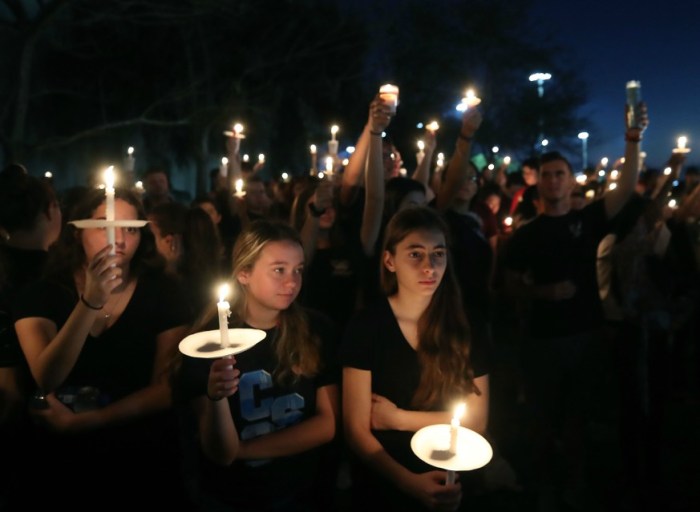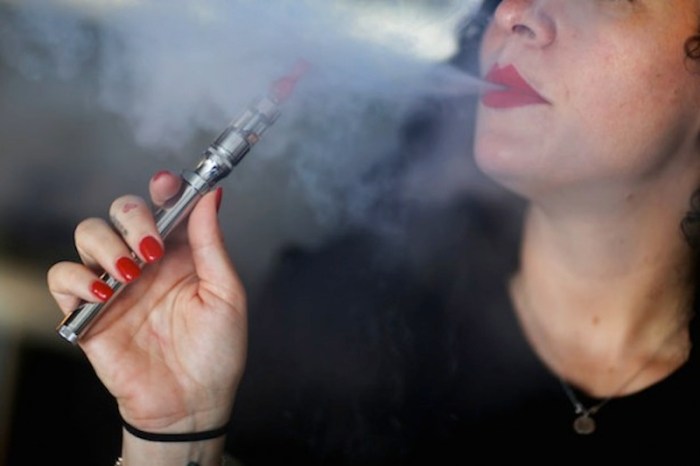The country’s top doctor is sounding the alarm on e-cigarettes, calling the product a public health threat to the nation’s young people.
Surgeon General Vivek Murthyreleaseda report today, detailing the negativehealth effects of the battery-poweredcigarettes and their rise among teen users. “My concern is e-cigarettes have the potential to create a whole new generation of kids who are addicted to nicotine,” Murthy told the Associated Press. “If that leads to the use of other tobacco-related products, then we are going to be moving backward instead of forward.” Like regular cigarettes, a user inhales through the e-cigarette mouthpiece, triggering a battery-powered heater that turns liquid nicotine into an inhalable vapor. Unlike cigarettes, the electronic counterparts do not contain tar or tobacco products, but they can contain synthetic nicotine, the addictive quality in cigarettes. Murthytold the AP ahead of his report that exposing a developing brain to nicotine of any kind is harmful.
When e-cigarettes first came on the market, they were pushed as an alternative tool to help smokers quit. Writing for the Wall Street Journal, Jed Rose, a professor of psychiatry and behavioral sciences and director of the Duke Center for Smoking Cessation at Duke University, said, “we should not discourage promising new approaches that might change this picture,” referring to the staggering rates of death and disease caused by cigarette smoking. “Nicotine is a powerfully addictive substance, but it is not the cause of cancer, lung disease or vascular disease seen in smokers,” Rose wrote. “While quitting all nicotine-containing products may be an ideal goal, smokers who try to stop on their own have less than a 5 percent chance of long-term success, and only about a 10 percentchance with the assistance of a medical provider.” Offering an opposing viewpoint in the same article, Pamela Ling, a professor of medicine with the Center for Tobacco Control Research and Education at the University of California, questioned the adverse health effects e-cigarettes may pose. “While some of these newer devices may deliver nicotine more effectively than first-generation devices — which should make them better quitting tools — they also generate more heat and produce more chemicals and fine particles, which may have adverse health effects,” Ling wrote. “Even assuming they are still safer than smoking tobacco, asking that e-cigarettes be safer than the world’s most deadly consumer product sets the bar extremely low,” she added.
The surgeon general’s report echoes that concern: E-cigarettes can contain harmful and potentially harmful ingredients, including ultrafine particles inhaled into the lungs, chemicals used for flavoring linked to serious lung disease and heavy metals. The report is the first comprehensive federal agencyreview of the impact of e-cigarettes on youth and young adults, and is the result of two years of research from the Department of Health and Human Services. Studying three age groups — young adolescents (11 to 14 years old), adolescents (15 to 17 years old) and young adults (18 to 25 years old) — the surgeon general found use of e-cigarettes has grown astronomically since 2011. In 2015, more than 25 percent of students in grades six through 12 had tried e-cigarettes. Use is prevalent among all genders, too. In 2011, 1 percent of girls and 2 percent of boys were e-cigarette users. Four years later, those figures rose to 13 percent and 19 percent, respectively. From the report’s data, it appears flavors are a big selling point for young people. Eighty-five percent of users aged 12 to 17 used an e-cigarette flavored with menthol, alcohol, candy, fruit, chocolate or other sweets. The surgeon general said scientists are still studying the effects of e-cigarettes on health, but urged adolescents to end the practice.
“Because most tobacco use starts during adolescence, actions to protect our nation’s young people from a lifetime of nicotine addiction are critical,” the report said.
Surgeon general calls e-cigarette use among kids a public health threat

Flickr / Casey Meshbesher


















